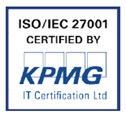Outsourcing in the Post-Digital Era
21 April 2021
Authors: Jesper Nevalainen, Itai Coleman and Anton Pirinen
In a fashion industry more competitive than ever, businesses need to take full use of the tools at their disposal. One of these tools is outsourcing, which is not a mere cost-saving measure, but one of the most efficient ways to access cutting-edge innovations and market-leading know-how. As outsourcing, and in particular outsourcing that helps achieve broader strategic goals, often takes a form of close collaboration, which affects the outsourcing entity’s control over its business, taking full advantage of the legal toolbox is essential in ensuring that the sought benefits can be obtained throughout the outsourcing life cycle.
Outsourcing for Innovations
Sourcing different services from a number of specialised service providers is the dominant sourcing strategy in the market. In the fashion industry, this strategy has, however, resulted in difficulties managing the various technologies required to operate an omnichannel business model. Moreover, the puzzle is set to become even more complex with the wider introduction of big data analytics, robots, and the Internet of Things. As a result, many businesses will be forced to re-evaluate the effectiveness of the traditional in-house business functions, such as the IT department.
One of the growing strategies used to benefit from the increasing technological complexity and solving other innovation objectives, such as apparel design, is vested outsourcing, which can be characterised as a one-to-one business collaboration where both parties are invested in identifying the best solutions. The parties form an interdependent relationship, meaning that their teams often work in close collaboration to create value, come up with solutions, and face issues and conflicts together. The outsourcing entity may, for example, procure an entire external team that in principle acts as their internal team. At its best, vested outsourcing makes it possible for businesses to stay in charge of the big picture, while acquiring market-leading know-how to achieve objectives that they themselves could not achieve.
From a legal perspective, a common problem with vested outsourcing arrangements is that businesses often do not contract for true partnerships. For example, the more successful the service provider is in helping the outsourcing entity to achieve its objectives, the more the service provider should benefit, for example, in form of compensation. It is also important to thoroughly discuss and agree on the objectives and the nature of the cooperation. As unclarities regarding the aforesaid can easily lead to undesirable results and turf disputes, it is also important to include a mechanism for the management of the parties’ relationship, and to ensure that the expectations, rights, and obligations of the parties remain clear throughout the arrangement. In addition, as in the case of more traditional forms of outcome-focused outsourcing, it is important to agree on the baselines from which success can be measured and to document not only this but also any progress towards the objectives. Disputes often arise due to objectives being too vaguely discussed, resulting in different views on whether the desired objectives have been achieved.
Contemporary Means for Reducing Costs
As vested outsourcing and other outcome-focused models are by their nature well suited for other objectives, the reputation of outsourcing as a cost-saving measure has diminished. However, this may be about to change again.
Today, many services are provided by people and supported by tools, but digital tools such as robots are increasingly becoming service providers which are merely being supervised by people. The emergence of digital outsourcing will continue to lead to cheaper, more efficient outsourcing practices. However, at the same time, the increased use of digital outsourcing will make questions related to data protection and security even more topical. Furthermore, it will change the outset for outsourcing agreements entailing that alternative contractual considerations and assessments should be made, for example, in relation to liability, pricing, and the ownership of data.
Change Is the Only Constant
The outsourcing industry has and will continue to be affected by the technological advancements, which has already resulted in the emergence of new outsourcing models and innovative digital approaches. As the world is set to become even more competitive in the coming years, outsourcing practices are likely to follow and become even more dynamic and collaborative. Therefore, the willingness to embrace technology, the ability to manoeuvre strategically, and taking full advantage of legal means to ensure that the desired objectives are met will be central and determinative in who will succeed in reaping the immense benefits that technological development and other megatrends of our time have to offer for the fashion industry.






